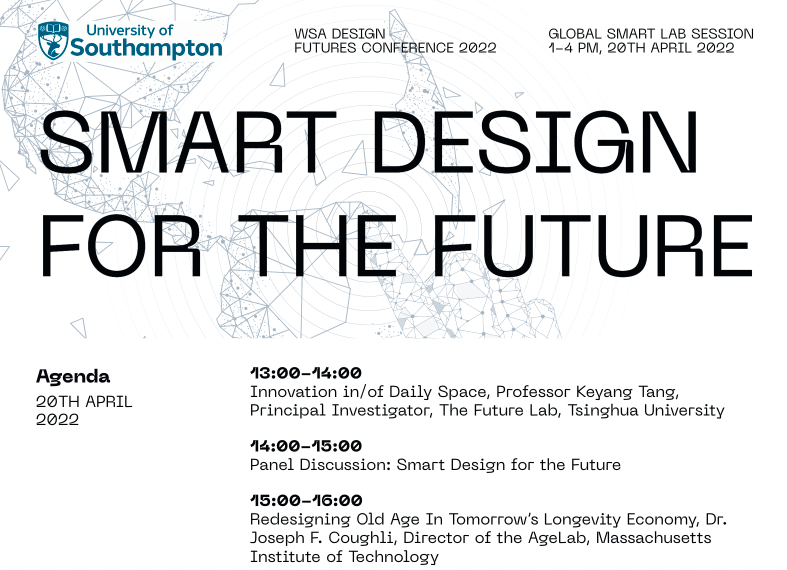A 5 minute panel presentation for the WSA Smart Design for the Future conference, 20/4/22, organised by Dr Yuanyuan Yin.
Full details on the conference
Text:
Yuanyuan has framed this panel discussion with a set of questions. I’m going to address two of them: What is Smart Design? What are the new opportunities to improve people’s lives?
What is Smart Design then? To my mind, for the term to have any purchase, to affect and improve people’s lives in ways that are significantly different to more established modes of design, we need to look not to the design of new products, systems or services per se. Design has always done that – and adding layers of novelty and complexity with digital, networked, mixed reality, or artificially intelligent technology does not in itself necessarily lead to any substantial change in our experience of such products and services. Rather we need to focus on what digital, networked and AI technologies offer that is qualitatively different. I would argue that what distinguishes the ‘smart’ from the not-smart in technology and design is the potential for responsive devices and systems, where the designed artefacts have a degree of agency and autonomy in their uses and environments that has to be acknowledged and factored in to the design itself. At first glance this is an obvious point: to design a device or service that incorporates AI for instance is of course to recognise and factor in the nonhuman behaviour and capacities of its algorithms, models and interfaces. But the ramifications are wider than this: full smart design entails not so much the design of discrete devices and systems, but rather the design of encounters between devices and systems and their human users. Or to put it another way, events in everyday settings in which the designed devices come together with human users – events that cannot be absolutely predetermined or prescribed, precisely because they are constituted by human and nonhuman participants interacting in unpredictable ways. Smart design here is not so much the design of smart objects as the design of a field of possible behaviours incorporating technical affordances and human interaction, and the social and physical contexts of those behaviours.
I’ll give a couple of examples from my own research on the design and testing of playful technologies. Experimental playful systems, and more conventional games and toys, offer a useful model for exploring the distinct characteristics and potential of smart design. And I was excited to hear about Prof Tang’s Lab’s collaboration with LEGO.
The children in this workshop were invited to imagine a future robotic game system from a set of models and prototypes. The lead designer assumed that the children would be thrilled by a robot toy that was fully autonomous, able to move around the house by itself when not employed in the game itself. But the children were distinctly unsettled by the idea, much preferring a greater degree of control over the device’s range of activities. They wanted a toy that was smart, but not too smart.
The popularity of the videogame Animal Crossing is predicated on its envelopment of its players in a sustained and engaging simulated world of trade, foraging, and social interaction. The non-player characters are chatty beings, but their conversation is hardly any more complex than that of a website chatbot. The ‘smartness’ of this world lies in its construction as a holistic economic and temporal environment, staging virtual events and encounters over days, weeks and years. And the smartness is framed and animated by the charm of character design, and sustained by game-like challenges and rewards.
To design for play is to design explicitly for behaviour, for moments of playful activity, whether that is the tightly rule-driven behaviour of a board game or videogame, or the more open-ended and imaginative behaviour of young children’s play with toys. Game and toy design demonstrates that deploying the most sophisticated and advanced AI does not necessarily lead to the most successful and satisfactory experience on the part of the players.
All design anticipates some degree of play in the broadest sense. As new objects, designed artefacts must negotiate their place in the world, they require a degree of latitude and flexibility in their material and aesthetic form to fit into established environments and practices. This applies just as much to serious applications, for health, retail or industrial settings as well as games and toys. For smart design the added challenge – and potential – is to engage with the world as an entity a little closer to a subject than an object, to negotiate its place as an agent responsive to, and impulsive of, human behaviour.




